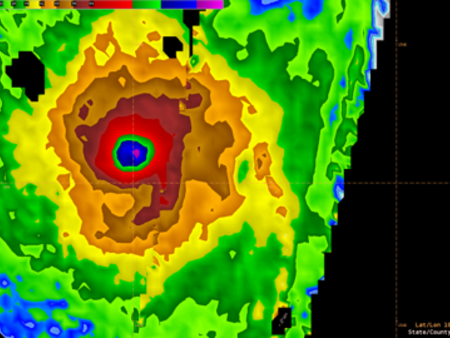Examples of Extra Tropical Storms
Extratropical cyclones, sometimes called mid-latitude cyclones or wave cyclones, are an everyday phenomenon which, along with anticyclones, drive the weather over much of the Earth. They are capable of producing anything from cloudiness and mild showers to heavy gales and thunderstorms. These types of cyclones are defined as synoptic scale low pressure weather systems that occur in the middle latitudes of the Earth (outside the tropics) not having tropical characteristics, and are connected with fronts and horizontal gradients in temperature and dew point otherwise known as "baroclinic zones".[
Extratropical cyclones play a significant role in determining the day-to-day weather conditions in many parts of the world through their associated wind and precipitation patterns. Their typical evolution characteristics are therefore of great interest to both educators and researchers of extratropical cyclone dynamics. The structure and evolution of extratropical cyclones, as viewed from the surface, was first described by Bjerknes and Solberg (1922) who developed a conceptual model called the Norwegian cyclone model. Inconsistencies between observations and the Norwegian model have led to refinements of the model and to the development of new conceptual models such as that proposed by Shapiro and Keyser (1990). Detailed analysis of the structure and evolution of individual extratropical cyclones suggest that although there is no universal lifecycle of extratropical cyclones some general cyclone characteristics can be identified (see review paper by Ulbrich et al. (2009) and references therein). For example, Browning and Roberts (1994) described the structural evolution of a moderately intense extratropical cyclone, using a combination of surface observations, satellite imagery, radar data and model output. They identified and described the evolution of cyclonic flows such as the warm and cold conveyor belt flows and the dry intrusion. Such case studies have contributed significantly to the generation of three-dimensional conceptual models of extratropical cyclones that provide a framework for understanding their dynamical evolution. These conceptual models are widely used in educational meteorology courses and texts (e.g. Ahrens, 2000) throughout the world to illustrate the basic structure and evolution of extratropical cyclones.
Never the less, as satellite observations from scatterometers saturates at high winds, it is rare to observe very high wind event in ETC. In this page we show few example of ETC surface wind speed structure as sampled by SMOS in different oceanic basins and we compare them to other fields (altimeter winds, models from ECMWF and NCEP).
Figure 1: Example of surface wind speed retrieval from SMOS (left) compared to the forecasts from NCEP (middle) and ECMWF (right) models.
Figure 2: Left: Saral Altimeter overpass of the ETC (14:37 UTC) probed by SMOS at 14:10 UTC. Right:Comparison of the wind speed products from SARAL, SMOS, ECMWF and NCEP along the altimeter track
Figure 3: Surface Wind speed in a North Pacific Extra-Tropical storm in Oct 2010.Top: ECMWF field; Bottom: SMOS retrieval.
Figure 4: Surface Wind speed in a North Pacific Extra-Tropical storm in Oct 2012.Top: ECMWF field; Bottom: SMOS retrieval.
Figure 5: Surface wind speed in several North Atlantic Extra-Tropical storm in Oct 2012. In each plot ECMWF field and SMOS retrievals are shown.
Figure 6: Surface wind speed in a South Pacific Extra-Tropical storm in Aug 2012.SMOS retrievals (top) ; ECMWF field (Bottom).
As revealed in these illustrative examples, SMOS is systematically showing a slightly different wind speed structure than ECMWF model and more importantly higher amplitude surface
winds.


